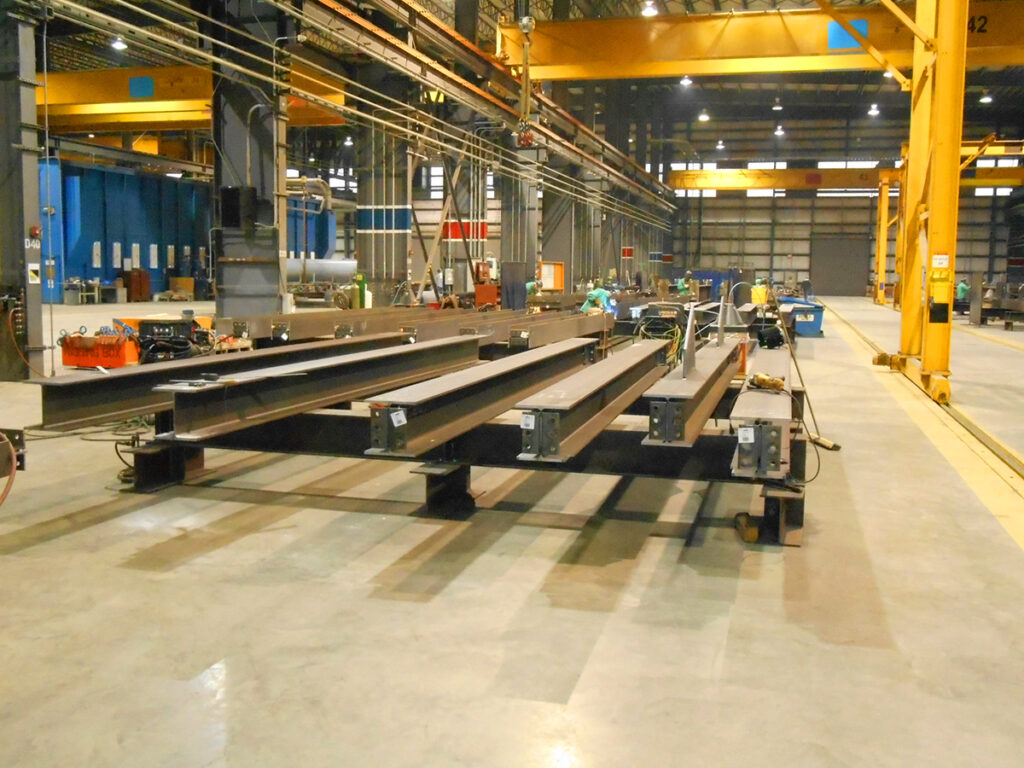What is Structural Steel Fabrication?
Structural fabrication refers to the cutting, bending, and assembling of steel to create different products. During structural steel fabrication, several pieces of steel are combined together to form different structures of predefined sizes and shapes intended for assembly into buildings, industrial equipment, tools, and various other final products.
What isn’t structural steel fabrication? It doesn’t mean any type of welding that strengthens or repairs steel. Steel fabrication is a special skill that requires experience transforming raw components into products that meet and exceed various standards and codes. Here is what goes into the fabrication of structural steel:

The Stages of Structural Steel Fabrication
Cutting Structural Steel
First, structural steel is cut by fabricators through sharing, sawing, or chiseling with different tools that include plasma torches, water jets, and laser cutters. This is just the first stage of structural steel fabrication that is typically done in a manufacturing facility that is closed and has abundant safety precautions in place to protect workers.
Bending Structural Steel
The second step to fabricating structural steel is to bend the alloy. Fabricators either hammer the steel manually or use machines. The decision on whether to do one or the other usually depends on how much repetitive bending the project requires. The more repetitive bending needed, the more likely the fabricator will rely on machinery.
Assembling Structural Steel
The final step of creating a structure involves combining the different parts of steel together. This is also usually done by welding—the application of heat to the steel parts to slowly join them together—but the pieces can also be bound together with adhesives or rivet construction.
To shape the pieces of steel into a structure, fabricators use equipment and design software to supervise the project. Regardless of the industry, most steel sections are produced in the facility and only afterward assembled on-site.
For all your queries
Just call us at +91-9493053320
Why Fabricate Structural Steel?
There are many benefits to incorporating structural steel in construction and other projects, but the products themselves can be complex and demand experienced structural steel fabrication teams to be successful.
Affordability
Compared to other metal options, steel is stronger and cheaper. It offers more value in the range of fabrication industries where it is a staple.
Prefabrication Ability
In construction and other industries, structural steel usually arrives in the pre-fabrication phase and is fabricated on-site. Pre-fabrications reduce how much work needs to be done on-site, fast-tracking projects.
Low Maintenance
Materials other than steel tend to be higher maintenance. For example, wood is vulnerable to bugs and can break down during corrosive weather conditions. Steel, meanwhile, is easily repaired and lasts a long time.
Appearance
Put simply, steel looks great and can enhance the appearance of different projects regardless of the look required.
Environmental
Steel is environmentally friendly because it can be endlessly reused and recycled. It also requires less energy to produce and generates less carbon dioxide.
Strength
Structural steel is very strong and weighs up to a third less than comparable metals.
Malleable
Structural steel is malleable and can be customized to meet project specifications, especially with experienced welders and fabricators. Because structural steel is an alloy, its physical and mechanical properties can be adapted as needed.
Applications for Structural Steel Fabrication
You will find structural steel fabrication across the construction, manufacturing, automotive, shipbuilding, and other industries. Here are just a few:

